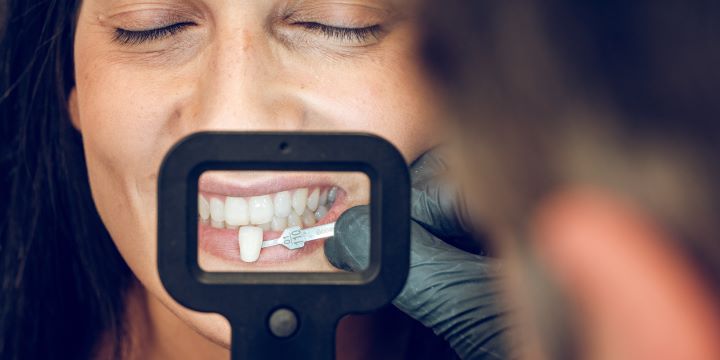Introduction
A radiant smile can leave a lasting impression, and for many, dental veneers have become the secret behind those flawless grins. Whether you’re looking to enhance the appearance of your teeth or correct imperfections, veneers offer a popular cosmetic dentistry solution. However, before diving into the world of dental veneers, one common question lingers: How much do veneers cost? In this comprehensive guide, we will explore the factors influencing the cost of veneers in the United States, along with frequently asked questions to help you make an informed decision.
Understanding Dental Veneers
Veneers for teeth are slender casings, typically crafted from either porcelain or composite resin, and intricately tailored to envelop the frontal aspect of the teeth. They are a versatile cosmetic dentistry option, addressing various aesthetic concerns such as discoloration, chipping, misalignment, and gaps between teeth. The process involves removing a small amount of enamel from the tooth’s surface to accommodate the veneer, creating a natural-looking and durable solution.
Factors Influencing the Cost of Veneers
1. Material Choice:
The type of material used for veneers significantly affects the overall cost. Porcelain veneers are known for their durability, stain resistance, and natural appearance but tend to be more expensive than composite resin alternatives.
2. Number of Veneers:
The number of teeth requiring veneers is a crucial factor. Certain individuals choose to undergo a comprehensive transformation of their smile, whereas others might only require veneers for specific teeth. The more veneers needed, the higher the total cost.
3. Dentist’s Expertise:
The skill and expertise of the dentist performing the procedure play a role in the cost. Experienced and highly skilled dentists may charge more for their services, but their expertise often ensures a successful and aesthetically pleasing outcome.
4. Location of the Dental Practice:
The cost of living and overhead expenses vary across different regions in the United States. Consequently, dental practices in urban areas or regions with a higher cost of living may charge more for their services.
5. Preparatory Procedures:
Some patients may require additional dental work before getting veneers, such as teeth cleaning, orthodontic treatments, or addressing underlying dental issues. These preparatory procedures can impact the overall cost.
Frequently Asked Questions (FAQs)
1. How much do veneers typically cost in the United States?
The cost of veneers can vary widely, ranging from $800 to $2,500 per tooth. Porcelain veneers are generally on the higher end of the price spectrum.
2. Does dental insurance cover the cost of veneers?
Dental insurance typically considers veneers a cosmetic procedure, and as such, it may not cover the full cost. However, it’s essential to check with your insurance provider to understand any potential coverage or reimbursement.
3. Are there financing options available for veneers?
Many dental practices offer financing plans or work with third-party financing companies to help patients manage the cost of veneers over time. Delve into these possibilities with your dentist when engaging in the consultation.
4. How long do veneers last?
On average, veneers can last 10 to 15 years with proper care and maintenance. Regular dental check-ups, good oral hygiene practices, and avoiding habits like teeth grinding can extend their lifespan.
5. Do veneers require special care?
While veneers are durable, they do require care. Maintaining good oral hygiene practices, avoiding excessive force when biting or chewing, and refraining from using teeth as tools can help prolong the life of veneers.
6. Can veneers be whitened if they stain over time?
In contrast to natural teeth, veneers do not react to teeth whitening procedures. It’s essential to choose a shade that meets your aesthetic goals during the initial placement to avoid color discrepancies later on.
7. Are there alternatives to traditional veneers?
Yes, alternatives such as composite resin veneers and dental bonding offer more budget-friendly options. Nevertheless, they might not possess the same level of durability or resistance to staining as porcelain veneers do.
Conclusion
Investing in a brighter, more confident smile through veneers is a personal decision that involves careful consideration of various factors, including cost. By understanding the influences on the cost of veneers and having answers to common questions, you can navigate this cosmetic dentistry journey with confidence. Consult with a qualified dentist to discuss your specific needs, budget, and desired outcomes, ensuring a radiant smile that lasts for years to come.
[wpcode id=”5650″]





